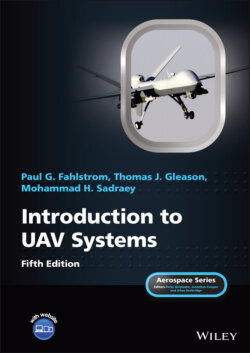Читать книгу Introduction to UAV Systems - Mohammad H. Sadraey - Страница 44
1.5.5 Development Setbacks
ОглавлениеDuring Global Hawk flight tests programs and long operations, there were a number of setbacks [4], where a few resulted in the loss of the air vehicle and one caused damage to the sensor suite of another air vehicle.
The major setback during flight testing was the destruction of air vehicle 2 on March 29, 1999. The aircraft experienced an uneventful liftoff from the runway at Edwards Air Force Base (AFB). As it was climbing, the air vehicle unexpectedly flipped over on its back, shut down its engine, and locked the flight controls into a death spin. The aircraft executed the termination command and crashed. The crash was due to a lack of proper frequency coordination between the Nellis AFB and Edwards AFB flight test ranges.
In December 1999, a software problem caused another Global Hawk to accelerate to an excessive taxi speed after a successful, full stop landing on Edwards’ main runway. An error in software code to coordinate between the mission planning system and the aircraft commanded the vehicle to taxi at 155 knots. The nose gear collapsed causing $5.3 million worth of damage to the electro‐optical/infra‐red (EO/IR) sensors. The primary cause of this mishap was the execution of a commanded ground speed of 155 knots for a taxi on the contingency mission plan.
During the deployment phase, two of the prototype air vehicles were lost and sustained. The first loss occurred on December 30, 2001, when the Global Hawk was returning from a truncated operational mission in support of Operation Enduring Freedom. To help a descent at 54,000 ft, four spoilers were raised to the maximum deflection (45 degrees), which caused a turbulent air‐induced flutter. The subsequent energy of the resultant flutter was absorbed by the right V‐tail main spar. The right outboard ruddervator actuator control rod failed, allowing the ruddervator to travel unrestrained beyond its normal range. Then, the vehicle departed controlled flight, entered a right spin, and crashed. The loss was attributed to a structural failure of the right ruddervator assembly of the V‐tail (massive delamination of the main spar).
The second loss occurred on July 10, 2002, when a Global Hawk was flying an operational mission in Operation Enduring Freedom. The mishap vehicle experienced a catastrophic engine failure and glided for about half an hour. The vehicle impacted the ground during the attempted emergency landing. The mishap was attributed to a fuel nozzle failure in the high flow position that eventually led to the engine internal failure.
Another loss was when on June 20, 2019, Iran shot down a Global Hawk with a surface‐to‐air missile over the Strait of Hormuz. Iran said that the UAV violated its airspace, while US officials responded that the air vehicle was flying in international airspace.
These real stories provided valuable lessons and presented expensive experiences for young UAV designers. As typical of any development program, the Global Hawk design changed as the result of flight tests.
